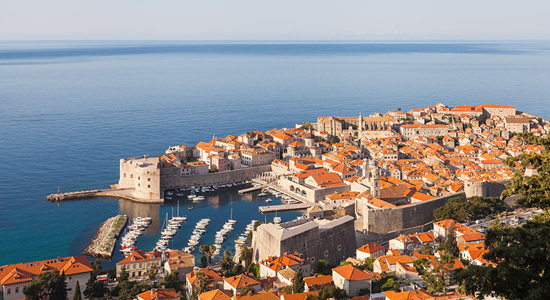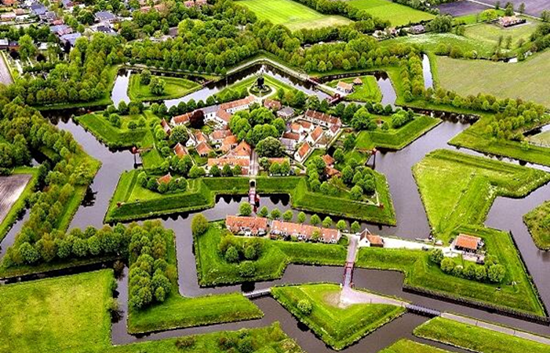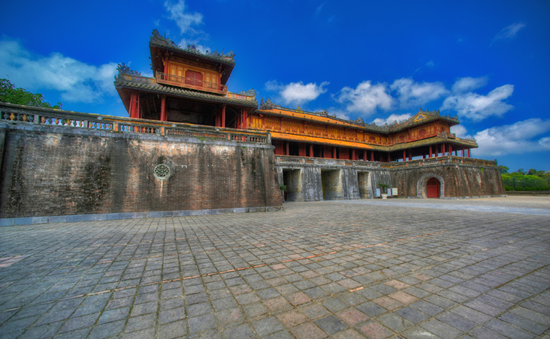
In previous eras, most of the world's major cities had a trait that few retain today: a fortified wall. Once necessary for protection, these barriers kept citizens safe from outside forces. As weapon technology advanced, walls become less and less important. They often turned into a hindrance for people living inside the city, and most of them were torn down. A few remain, having been absorbed into the modern landscape, like the imposing walls of Xian, pictured above.
Here are 10 examples of historic city walls that are still standing today.
1. Gradara, Italy
Like other rural castle towns in Italy, Gradara has a long and occasionally violent history. Its narrative dates back to the 12th century. Like other towns in the region, it has been controlled by different families, some of them associated with the famous Borgias. The castle was the site of battles between militias who supported various factions allied with these wealthy families.
Things are much more peaceful nowadays. Gradara's thick stone walls and the large castle from this feudal era are still in remarkably good condition. Visitors can hang out in the local trattorias and wander through the olive groves outside the imposing stone barriers. Gradara is located on a hill, so it's easy to see the surrounding landscapes from inside the castle and on the wall.
2. Shibam, Yemen
Shibam is a settlement in the desert of Yemen that dates back to the 2nd century. The village is now a UNESCO World Heritage site. Its mud-brick buildings are considered the world's first high-rises. Some of them stretch 11 stories above street level and are still in amazing condition given their age. (Most were built sometime during the 16th century.)
Shibam currently has about 7,000 residents. In addition to its ancient high-rises, there's a wall around the town that dates back to the 1500s. It was constructed to protect residents against Bedouin raiders. Given that its walls are made of mud brick, Shibam must occasionally apply fresh layers of mud to prevent erosion.
3. Essaouira, Morocco
Essaouira is a walled city on Morocco's Atlantic coastline. At first glance, it appears almost European in its design, which is a logical first impression. Much of Essaouira was designed by a Frenchman. Inside the walls, however, this town is filled with traditional Moroccan scenes: small shops, winding lanes and a kind of frozen-in-time feel.
The walls are still largely intact. In fact, they're still useful when the winter weather whips up the waves and winds. The town was a bit of a hippie hangout in the 1960s, drawing the likes of Jimi Hendrix and Cat Stevens. These days Essaouira is a popular beach destination for domestic tourists. Moroccans flock there each summer.
4. Dubrovnik, Croatia
Dubrovnik is widely considered one of the world's most picturesque cities. The walled Old Town sits right next to the Adriatic Sea. This Croatian city only has a population of around 40,000, but its numbers swell each summer during tourist season. The historic buildings and marble streets are beautiful, but tourists also come to see the bell tower, Gothic palace and waterfront fortress.
One option is taking a guided tour around the city walls. Being able to be so close to the imposing stone barriers is exciting, but many people come just to enjoy the views of both the Old Town and the Adriatic.
5. Bourtange, Netherlands
Bourtange is a village of about 400 people in the Netherlands. The main feature of this town is the large star-shaped fort that dates back to the 16th century. Bourtange Fort was used by the military until the 1850s because of its strategic location near the border with Germany.
In the 1960s, the town fell on hard times. In order to draw tourists, city leaders renovated the fort's walls so that they appeared just as they did in the mid-18th century. There are moats all around the walls of the Bourtange, giving it even more picturesque appeal.
6. Xian, China
Xian is probably best known for its famous Terracotta Warriors. These ancient statues draw tourists from all over the world. However, they are not the only historic attractions in this city in central China. There's also an impressively large stone wall with towers. The wall has been restored and is considered one of the largest remaining city walls in the world.
The barrier is imposing by any definition. It stands almost 40 feet tall and is 50 feet across at the top. The most impressive statistic is the wall's length. It stretches around the Old City of Xian for 8.5 miles. A popular tourist activity is to bike around the top of the wall. There's even an annual marathon that uses the wall as the track.
7. York, England
York is a city with 200,000 residents in Yorkshire, England. It contains some of the best examples of medieval architecture remaining in Europe. After London, it is one of England's most-visited tourist destinations. People come from all over the world to see the castles, towers and cathedrals that have been built here over the centuries.
The city's medieval wall follows the course of a barrier that was built during Roman times. It is 4-and-a-half miles long. Many tourists choose to take the 90 minute hike around the entire wall to take in the sights. They stop at places like Monk Bar, a gate that still has a working portcullis. In addition, there are museums and exhibits at some of the gates that put the site in a historical context.
8. Hue, Vietnam
Hue is in Central Vietnam. It was an imperial capital for hundreds of years. Some of the gates in the wall surrounding the Citadel now have roads running through them. Hue's Citadel was the site of fierce battles during the Vietnam War's Tet Offensive in 1968.
Parts of the ancient city were almost completely destroyed during the heavy fighting. Some of the buildings have been renovated completely, and others are in the process of being rebuilt. Tourists can enter the walled compound after paying an admission fee. However, you can walk around the outside, ride under the gates and drink coffee right up against the wall without having to buy a ticket.
9. Carcassonne, France
Carcassonne is a fortified city in Southern France. Located on a hilltop, the town is bristling with turrets and circled by a thick stone wall. The castle is best viewed from outside, especially since the town inside the walls is reportedly quite touristy, with inflated prices and lots of souvenir shops.
One of the best ways to reach Carcassonne is via the Canal du Midi, a 150-mile waterway that runs through some of the most scenic areas of Southern France. Most boat tours on the canal include a stop at Carcassonne.
10. Harar, Ethiopia
The town of Harar, not far from the Ethiopian city of Dire Dawa and the borders with Somalia and Djibouti, is considered one of the holiest places in the Islamic world. It has dozens of mosques and shrines, some of which are over 1,000 years old.
The city walls, which date back to the 16th century, surround a compact town with hundreds of narrow streets and alleys and unique town homes that are built to fit snuggly in the tight quarters. In addition to African and Arab design influences, some of Harar's architectural styles were infused by Indian immigrants, who came here in the 19th century.










No comments:
Post a Comment
Please adhere to proper blog etiquette when posting your comments. This blog owner will exercise his absolution discretion in allowing or rejecting any comments that are deemed seditious, defamatory, libelous, racist, vulgar, insulting, and other remarks that exhibit similar characteristics. If you insist on using anonymous comments, please write your name or other IDs at the end of your message.